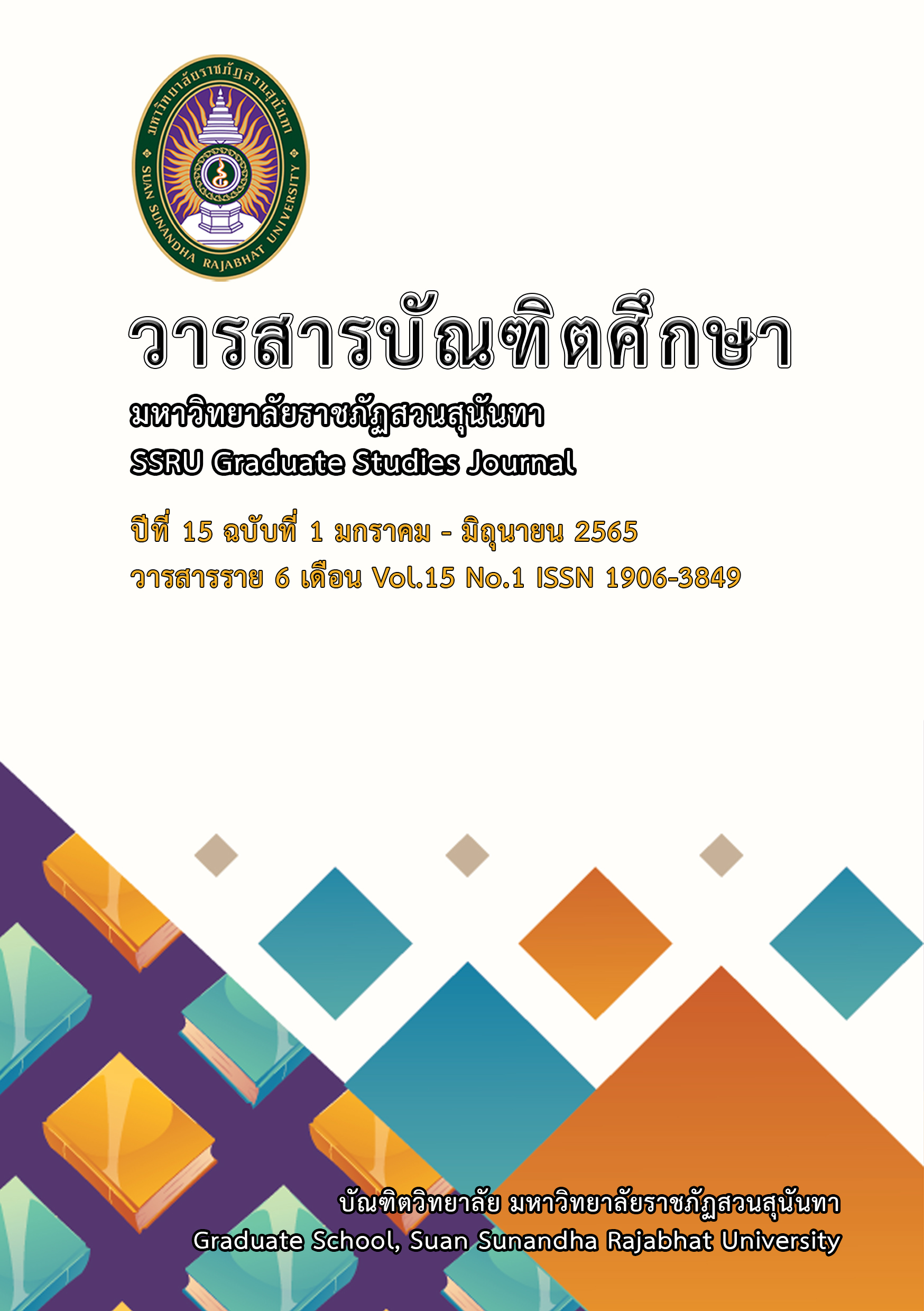The Model for Developing Customer Loyalty for the Energy-Saving Lighting Business in Thailand
Main Article Content
Abstract
This study is about a model for developing customer loyalty for the energy-saving lighting in Thailand. It aimed to: 1) examine casual factors influencing the development of a model for developing customer loyalty for the energy-saving lighting business in Thailand; 2) study a model for developing customer loyalty for the energy-saving lighting business in Thailand; 3) develop a model for developing customer loyalty for the energy-saving lighting business in Thailand. This research employed a mixed research methodology. Questionnaire was used to collect the data from 400 persons using products. The data were analyzed by using structural equation model (SEM). In addition, to collect qualitative data, in-depth interviews were also conducted with 15 entrepreneurs and marketing experts.
The findings showed that most of the respondents were men aging between 30-39 years old, working in a private company, earning around 30,001-40,000 Baht per month, holding a Master’s degree, and had around 3-4 years of working experiences. The hypothesis testing results showed that product quality, perceive value, and quality of service had a positive direct influence on customer satisfaction, customer trust and customer loyalty. In addition, customer satisfaction and customer trust had a positive direct influence on customer loyalty, with a statistical significance at .01. It was also found that the factors conformed to the empirical evidence, and the Goodness of Fit Index of all 4 indexes were acceptable (The Model X2/df = 0.547, GFI = 1.00, AGFI = 0.990, and RMSEA = 0.000). This was concluded that the structural equation model conformed to the empirical evidence.
Article Details
References
วิสาขา ภู่จินดา. (2560). การพัฒนาพลังงานหมุนเวียนเพื่อใช้ผลิตกระแสไฟฟ้าให้ประเทศไทย.
เอกสารวิจัยเสนอต่อคณะกรรมการส่งเสริ มงานวิจัย, สถาบันบัณฑิตพัฒนบริหารศาสตร์.
สุกรานต์ โรจน์ไพรวงศ์. (2561). พลังงานสิ่งแวดล้อม. กรุงเทพฯ : มูลนิธิโลกสีเขียว.
Aaker. (1992). Marketing Research. New York: John Wiley and Sons.
Baig, Sajjad ahmad Bai. (2015). Causal model of brand loyalty for fitness business.
American Journal of Industrial and Business Management 5 (03), 138.
Crompton, MacKay, & Fesenmaier. (1991). Determination of metals and anions in soils,
sediments and sludges. London.
Garvin, D. A. (1984). What does product quality really mean? Sloan Management
Review, 26(1), 25-43.
Gibson, J. L. (1966). Organizations Behavior. (7th ed.). Boston: Irwin.
Gladden & Funk. (2001). Extending the understanding of professional team brand
equity to the global marketplace. International Journal of Sport
Management and Marketing , 3(1-2), 58-77
Hyuk Park. (2011). Embedded and multimedia computing technology and
service[electronic resource]. Dordrecht; Springer Netherlands: Imprint
Springer.
Jirawat A., & Panisa, M. (2009). The impact of perceived value on spa loyalty and its moderating
effect of destination equity. Journal of Business & Economics Research, 7(12), 73-90.
Khoei, Rahil. (2014). Brand equity: Is it more important in services: Journal of
Services Marketing, 15(5), 328-342.
Kotler, Philip and Gary Armstrong. (1996). Principles of Marketing (8th ed). Prentice-
Hall, Inc.
Kotler, P., & Keller, K. (2009). Marketing management (13th ed.). Pearson Prentice
Hall.
Lovelock, C. H. (1996). Services marketing (3rd ed.). Upper Saddle River, NJ:
Prentice Hall.
Mackay & Crompton, J. L. (1990). Quality, satisfaction and behavioral intentions.
Annals of Tourism Research, 27(3), 785-804
Nancy. (2014). Nutritional supplement practices in UK junior national track and field
athletes. British Journal of Sports Medicine, 39, 645-649.
Parasuraman, A., Zeithaml, V. A., & Berry, L. L. (1988). SERVQUAL: A multiple-item
scale for measuring consumer perceptions of service quality. Journal of
Retailing, 64(1), 12-40.
Raharjo, Hendry. (2015). Segmentation of the Senior Pleasure Travel Market.
http://doi.org/10.1177/004728758902700304.
Ruyter, K., & Bloemer, J. (1999). Customer loyalty in extended service settings.
The interaction between satisfaction, value attainment and positive mood.
International Journal of Service Industry Management, 10(3), 320-336.
Saeed, K., Hwang, Y., & Yi, M. (2003). Toward an integrative framework for online
consumer behavior research: A meta-analysis approach. Journal of End User
Computing, 15(4), 1-13.
Woodruff, R. B. (1997). Customer value: The next source for competitive advantage.
Journal of the Academy Marketing Science, 25(2), 139-154.
Zeithaml, V. A. (1988). Customer perception of price, quality, and value:
A means-end modeland synthesis of evidence. Journal of Marketing, 52(3),
-22.


